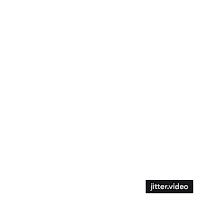RBC (Red blood cells) and Anemia
Introduction
The most prevalent type of blood cell in the human body are red blood cells, or erythrocytes. They primarily carry carbon dioxide back to the lungs so that it can be breathed, as well as oxygen from the lungs to the body's tissues and organs.
Lifespan of RBCs
RBCs are made in the bone marrow and have a 120-day average lifespan. Due to their small size, flexibility, and biconcave disk-like form, they may easily fit into constricted blood arteries and effectively transfer oxygen.
A hormone called erythropoietin, which the kidneys generate in reaction to low blood oxygen levels, controls the maturation and synthesis of RBCs.
Video lecture in Anemia in Nepali
Abnormalities in RBC count or function can lead to a range of medical conditions, including anemia, sickle cell disease, and polycythemia. Understanding the structure and function of RBCs is important in the diagnosis and management of these conditions.
Anemia:
Anemia is a disorder where the body's ability to carry oxygen is compromised due to a shortage of red blood cells (RBCs) of a certain type or quantity. This may result in symptoms like weakness, exhaustion, breathlessness, and pale skin.
Blood loss, a decline in RBC production, or an increase in RBC oxidation are a few of the causes of anemia. Iron deficiency, vitamin B12 insufficiency, and chronic illnesses including cancer or kidney disease are common causes of anemia.
Causes of Anemia
Blood tests to assess RBC count, hemoglobin levels, and other indicators of RBC function are frequently used to diagnose anemia. Depending on the underlying cause of the anemia, treatment options may include dietary adjustments, vitamin or iron supplements, prescription drugs, or blood transfusions.Treatment of anemia
In addition to controlling any underlying medical disorders that may raise the risk of anemia, prevention of anemia entails keeping a nutritious diet that contains supplies of iron, vitamin B12, and other vital minerals.
Thank you so much for being here.
Tags(please ignore): Health exams Exam preparation Medical exams Health test Study tips Health education Health knowledge Exam stress Health science Health information Exam strategies Health conditions Test anxiety Health promotion Exam resources Health resources Health research Exam techniques Health coaching Exam success PSC exam preparation Lok Sewa exam tips License exam study material Exam syllabus Exam pattern Previous year question papers Mock exams General knowledge for exams Exam eligibility criteria Exam registration Exam dates Exam centers Exam results Exam analysis Exam cutoff marks Exam books and guides Exam coaching Exam time management Exam revision techniques Exam success stories Public service commission exam Civil service exam preparation PSC exam syllabus PSC exam pattern PSC exam eligibility PSC exam registration PSC exam dates PSC exam centers PSC exam results PSC exam preparation tips Lok Sewa Aayog exam preparation Lok Sewa Aayog exam syllabus Lok Sewa Aayog exam pattern Lok Sewa Aayog exam eligibility Lok Sewa Aayog exam registration Lok Sewa Aayog exam dates Lok Sewa Aayog exam centers Lok Sewa Aayog exam results License exam preparation License exam syllabus License exam pattern License exam eligibility License exam registration License exam dates License exam centers License exam results License exam preparation tips General knowledge for PSC, Lok Sewa, and license exams Current affairs for exams Mental ability for exams











What is your say on this?